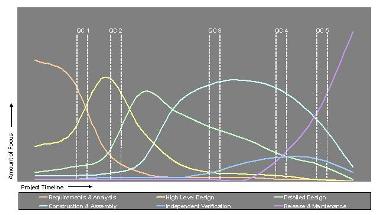- Home
- Programs and Services
- Aerial Photography
- ARC/PLC Program
- Commodity Operations
- Conservation Programs
- Conservation Reserve Program
- Conservation Reserve Enhancement Program
- Emergency Conservation Program
- Farmable Wetlands Program
- Grassland Reserve Program
- "Grassroots" Source Water Protection Program
- Transition Incentives Program
- Reports and Statistics
- CREP State Updates
- Prospective Participants/General Public
- CRP Practices Library
- CRP Grasslands
- Cooperative Agreements
- Cotton Ginning Cost Share Program
- Dairy Margin Protection Program
- Disaster Assistance Programs
- Emergency Assistance for Livestock, Honey Bees, and Farm-raised Fish (ELAP)
- Emergency Forest Restoration Program (EFRP)
- Livestock Forage Program (LFP)
- Livestock Indemnity Program (LIP)
- Noninsured Crop Disaster Assistance Program (NAP)
- Tree Assistance Program (TAP)
- Loss Adjustment Standards Handbooks
- Disaster Designation Information
- Economic and Policy Analysis
- Energy Programs
- Environmental and Cultural Resource Compliance
- Farm Bill Home
- Farm Loan Programs
- Financial Management Information
- Laws and Regulations
- MIDAS
- Organic Certification Cost Share Program (OCCSP)
- Outreach and Education
- Payment Eligibility
- Price Support
- Initiatives
- About FSA
- Structure and Organization
- FSA Biographies
- FSA Administrator
- Associate Administrator for Operations & Management
- Director for Civil Rights
- Chief Information Officer
- Director of the Office of Budget and Management
- Director for External Affairs
- Director of Economic Policy Analysis Staff
- Deputy Administrator for Farm Programs
- Deputy Administrator for Farm Loan Programs
- Deputy Administrator for Commodity Operations
- Deputy Administrator for Field Operations
- Deputy Administrator for Management
- State Executive Directors
- Human Resources Director
- History and Mission
- Budget and Performance Management
- Human Resources
- FSA Logo and Usage
- Strategic Plan
- Office Consolidations
- State Offices
- Impacts
- Página Principal de FSA
- State Offices
- Alabama
- Alaska
- Arizona
- Arkansas
- California
- Colorado
- Connecticut
- Delaware
- Florida
- Georgia
- Hawaii & Pacific Basin
- Idaho
- Illinois
- Indiana
- Iowa
- Kansas
- Kentucky
- Louisiana
- Maine
- Maryland
- Massachusetts
- Michigan
- Minnesota
- Mississippi
- Missouri
- Montana
- Nebraska
- Nevada
- New Hampshire
- New Jersey
- New Mexico
- New York
- North Carolina
- North Dakota
- Ohio
- Oklahoma
- Oregon
- Pennsylvania
- Puerto Rico
- Rhode Island
- South Carolina
- South Dakota
- Tennessee
- Texas
- Virginia
- Virgin Islands
- Vermont
- Utah
- Washington
- West Virginia
- Wisconsin
- Wyoming
- Online Services
- eLDP
- eARC/PLC
- ESII
- FSAfarm+
- HayNet
- TipNet
- Systems Development Life Cycle Home
- About FSA IT Architecture
- News
- Help
- Contact Us
- Advanced Search
- Search Tips
- EA Overview
- Enterprise Architecture Program
- Enterprise Architecture
- FSA Infrastructure
- SDLC Overview
- Background
- Development Process
- Quick Start Guide
- Project Management Process
- Configuration and Change Management
- Mainframe & System 36 SDLC
- Developer Tools Overview
- Architectural Decisions/Waivers
- FSA Assets and Shared Services
- Information Bulletins & Memos
- Learning Overview
- Training Schedule
- Approved Software
- FSA Quality Assurance & Control Process
- Templates and Documents
- Newsroom
- About FSA IT Architecture
- News
- Help
- Contact Us
- Enterprise Architecture
- EA Overview
- Enterprise Architecture Program
- Enterprise Architecture
- FSA Infrastructure
- FSA SDLC-Home
- SDLC-Home Overview
- Background
- Development Process
- Quick Start Guide
- FSA Quality Assurance & Control Process
- Project Management Process
- Configuration and Change Management
- Mainframe & System 36 sdlc-home
- Developer Tools
- Developer Tools Overview
- Architectural Decisions/Waivers
- FSA Assets and Shared Services
- Approved Software
- Templates and Documents
- Information Bulletins & Memos
- Learning
- Learning Overview
- Training Schedule
- Home
- / Online Services
- / Systems Development Life Cycle Home
- / Background
Background
The FSA SDLC describes important elements of software development in a common and consistent way. It is an iterative process broken down into six phases, pulling key elements from the USDA SDLC, Agile, RUP and other methodologies creating a methodology that satisfies the unique constraints of the FSA development environment. The FSA SDLC provides a standard approach that results in the production of well documented, quality software.
FSA SDLC Phases
The graph below (click to enlarge) is intended to portray the level of focus spent in each phase over the life of a project. For example, early in the project the majority of the focus is on the Requirements & Analysis (the orange line), but some high level design (the yellow line) is also going on, as well as a limited amount of detailed design and construction. As the project moves through its lifecycle, the area of focus changes. The primary purpose is to show that the phases of the SDLC are not mutually exclusive and that they overlap significantly.
About the Artifacts
Artifacts are the tools or "vehicle" used to support the needed work. Each phase of the process has artifacts that are associated with it (i.e., the Business Rules, Vision document,Test Strategy, etc.). These artifacts should not be viewed as sequential stepping stones in the development process, but rather, living documents that are open to modification throughout the entire life cycle. For example, the Vision document is among the first artifacts to be produced and reviewed by the project stakeholders, but it may need to be updated later in the Design phase when certain changes in direction may become necessary.
The content provided in the SDLC artifacts is essential to the success of the project. As such, these project artifacts may be subjected to the IT Quality Process.


